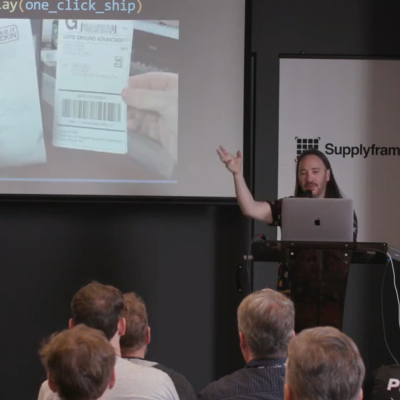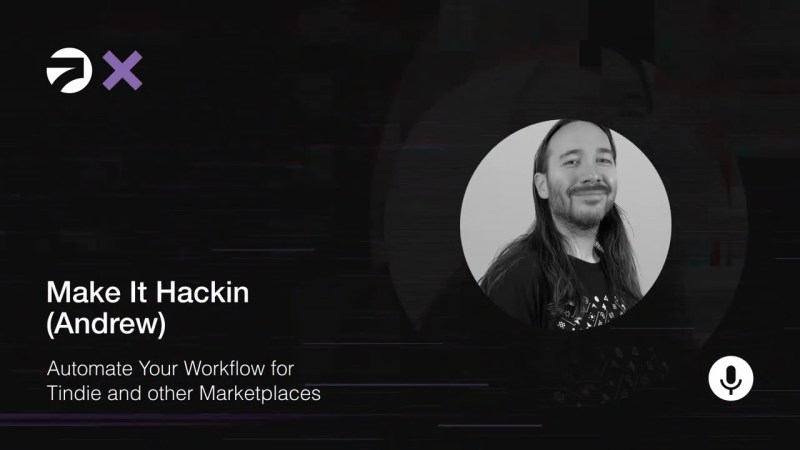Selling your hardware hacks is a great way to multiply your project’s impact, get your creations into others’ hands, and contribute to your hacking-related budget while at it. If you’re good at it, your store begins to grow. From receiving a couple orders a year, to getting one almost every day – if you don’t optimize the process of mailing orders out, it might just start taking a toll on you.
That is not to say that you should worry – it’s merely a matter of optimization, and, now you have a veritable resource to refer to. At Supercon 2023, [MakeItHackin]/[Andrew] has graced us with his extensive experience scaling up your sales and making your shipping process as seamless as it could be. His experience is multifaceted, and he’s working with entire four platforms – Tindie, Lectronz, Etsy and Shopify, which makes his talk all that more valuable.
[MakeItHackin] tells us how he started out selling hardware, how his stores grew, and what pushed him to automate the shipping process to a formidable extent. Not just that – he’s developed a codebase for making the shipping experience as smooth as possible, and he’s sharing it all with us.
His research was initially prompted by Tindie, specifically, striving to make the shipping process seamless. If you go the straightforward way and use the Web UI to copy-paste the shipping data in your postal system, it’s going to take you a good few minutes, and it’s an error-prone process. This is fine for a couple orders a year, but when you’re processing dozens of orders at a time, it starts to add up. Plus, there’s a few issues – for instance, the invoices Tindie prints out, are not customizeable. As for Etsy, it is less than equipped for handling shipping at all, and you are expected to have your own system.
 There are APIs, however – which is where automation can begin. The goal is simple – spending as little time as possible on shipping, and as much time as possible on designing hardware. He shows us a video with a simple demo – cutting down the shipping label creation time from a couple minutes, down to fourteen seconds. That alone is a veritable result, and, there’s more.
There are APIs, however – which is where automation can begin. The goal is simple – spending as little time as possible on shipping, and as much time as possible on designing hardware. He shows us a video with a simple demo – cutting down the shipping label creation time from a couple minutes, down to fourteen seconds. That alone is a veritable result, and, there’s more.
On the way there, he’s had to reverse-engineer a couple APIs. In the talk, you get a primer about APIs – how they work, differences between external and internal APIs, ways to tap into internal APIs and make them work your magic. APIs are one of the keys to having the shipping process run smoothly and quickly, and [MakeItHackin] teaches you everything, from managing cookies to using browser inspect element tools and Selenium.
Another key is having fun. [MakeItHackin] gives us another demo – an automated system that stays in your workshop, powered by a Raspberry Pi and assisted by an Arduino, which does the entire process from start to finish without human input, save for actually putting things into envelopes and taking them to the post office. Of course, the system is also equipped with flashing lights and sirens – there’s no chance you will miss an order arriving.
Then, he goes into customs and inventory management. Customs forms might require special information added to the label, which is all that much easier to do in an automated process completely under your control. As for inventory management, the API situation is a bit dire, but he’s looking into a centralized inventory synchronization system for all four platforms too.
The last part is about working with your customers as people. Prompt and personalized communication helps – some might be tempted to use “AI” chatbots, and [MakeItHackin] has tried, showing you that there are specific limitations. Also, careful with the temptation to have part of your shipping process be cloud-managed – that also means you’re susceptible to personal data storage-related risks, so it might be best to stay away from it.
In the end, we get a list of things to watch out for. For instance, don’t use your personal details on the envelope, whether it’s the “From” address or the phone number, getting substitute ones is well worth it to protect your privacy. On the practical side, using a label printer might turn out to be significantly cheaper than using an inkjet printer – remember, ink costs money, and, there’s a dozen more pieces of advice that any up-and-coming seller ought to know.
Of course, all this is but a sliver of the wealth of information that [MakeItHackin] shares in his talk, and we are overjoyed to have hosted it. If you’re looking to start selling your hardware, or perhaps you’re well on your way, find 45 minutes for this talk – it’s worth its metaphorical weight in gold.

















Nice work! Time to create a JSON standard for orders and fulfilment APIs so that we can speak to all these platforms the same way (queue in https://xkcd.com/927/).
Just to note a typo: it’s “lectronz” not “lektronz”.
oh thank you, fixed! and yes, wish there was a standard,,, does require the different platforms to talk between themselves and make one, weh!